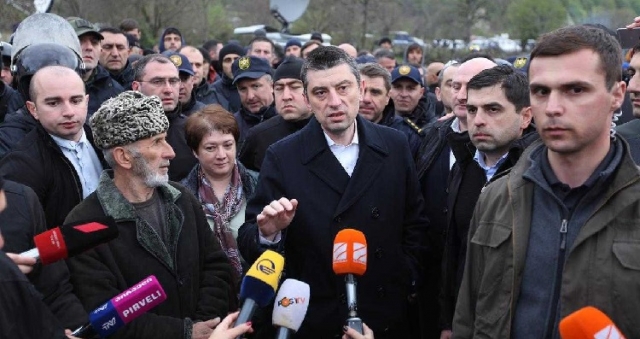55 Injured in Clashes between Police and Hydropower Plant Protestors in Pankisi
Clashes occurred between police and local residents protesting the construction of the Khadori hydropower plant (HPP) in Birkiani in Georgia’s Pankisi region on Sunday.
Several hundred local residents attended the protests where clashes broke out. Protestors reportedly threw stones and sticks at police officers whilst the police fired tear gas and rubber bullets. The Ministry of the Interior announced that 55 people were injured, including 17 civilians and 38 police officers.
The construction of HHPs is controversial in Georgia. Although the power they create is essential for a country that is becoming ever more dependent on electricity, they are often condemned for damaging the environment and fragile eco-systems.
Georgia’s hydroelectric potential still remains largely untapped, in which private investors, international leaders, and private investors are increasingly interested. However, the HPPs built in Georgia have negatively impacted local residents.
For example, Shuakhevi HPP built in the Ajara region in western Georgia, wreaked havoc on the environment in the area. 93 hectares of natural habitats were destroyed during the construction of Shaukhevi HPP, whilst a further 30 hectares were demolished to make way for access roads, transmission lines, and job facility areas. A report by the Association Green Alternative predicted that a total of 170 hectares of nature would be destroyed, endangering animal species.
As well as devastating natural habitat and wildlife, the construction of HPPs affects the livelihoods of local residents as water is siphoned off causing shortages for farming, drinking, and irrigation. It also threatens tourism in the area due to the environmental damage and restriction of activities such as rafting.
In addition, authorities often forcefully resettle residents to make way for the power plants. For example, the CEE Bankwatch Network, an EU-funded network of grassroots, environmental and human rights groups, reported that 2000 people were resettled for the construction of the Khudoni dam in Svaneti
The government and investors, keen to exploit Georgia’s hydroelectric potential, have struggled to win over local residents in support for HPPs and protests have become common. Authorities recently announced that they may halt constructions in Machakhela in Ajara following a demonstration, whilst residents recently protested in lower and upper Svaneti.
The World Bank published an Analysis on February 22, 2018, assessing power purchase agreements that the Georgian government signed for various energy products, including hydropower. The damning report revealed huge fiscal costs, such as 1.8 billion Euro for the Nenskra HPP.
The government agreed to pay the developer of the Nenskra HPP 90.6 million USD the year the first year that the plant creates electricity, increasing by 3 percent for the following 33 years. Even exporting electricity to Turkey will not prevent the state from digging into their own pocket to pay the tariffs.
This weekend’s protest in Pankisi underlines the sensitivity of HPP construction. Interior Minister Giorgi Gakharia and various officials visited the scene and held a meeting with Pankisi’s Council of Elders. The Ministry of Economy informed OC Media that construction works will stop until an agreement is reached between the local population and the construction company. “We have postponed the construction of HPP and agree that it will only be built if 90 percent of the population supports the idea,” stated Gakharia.












